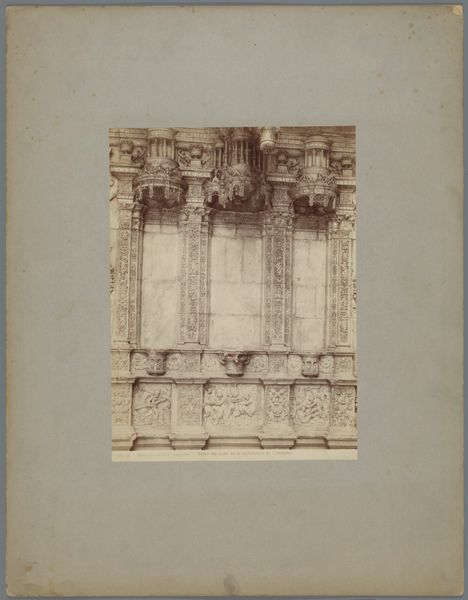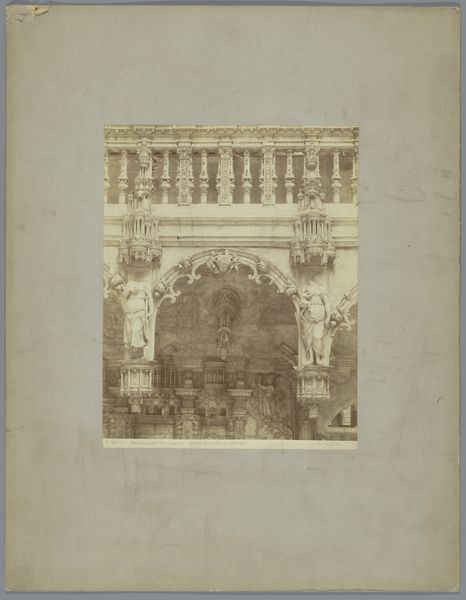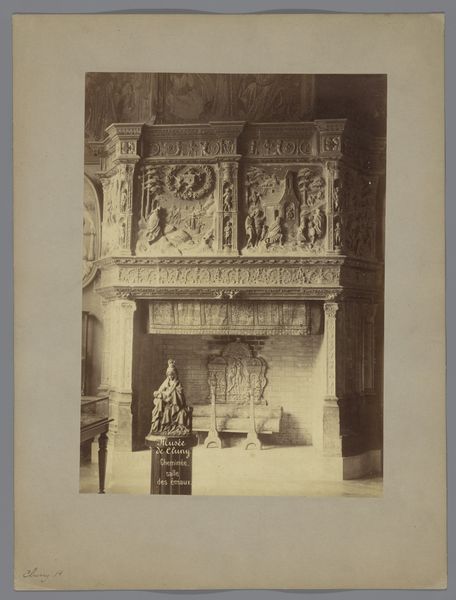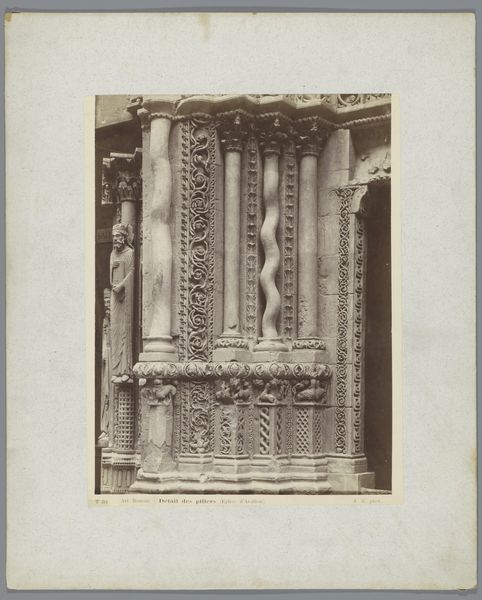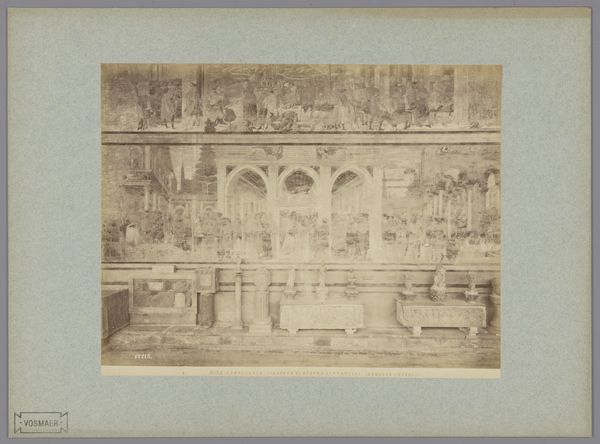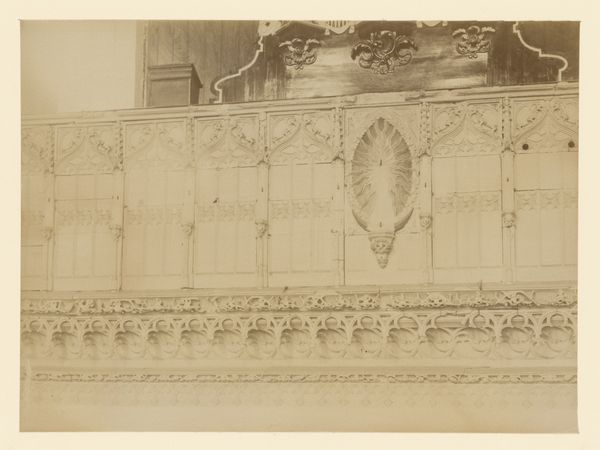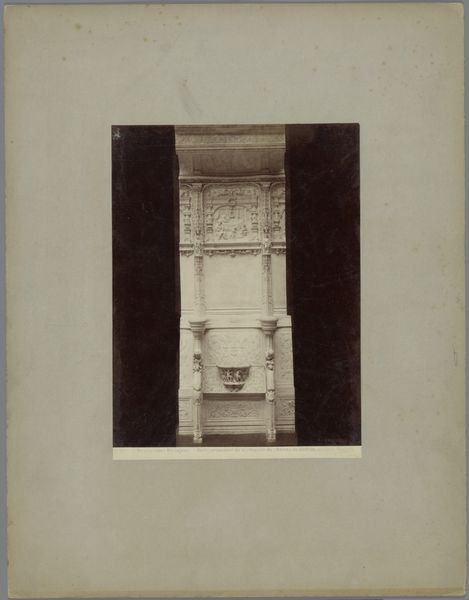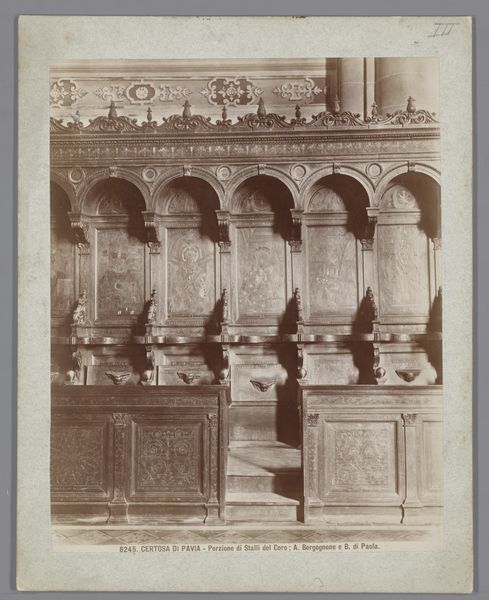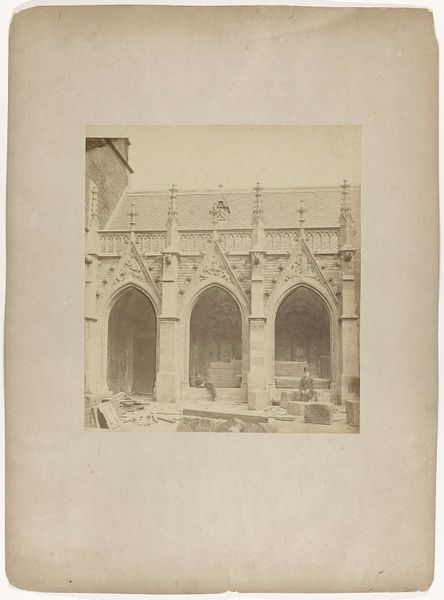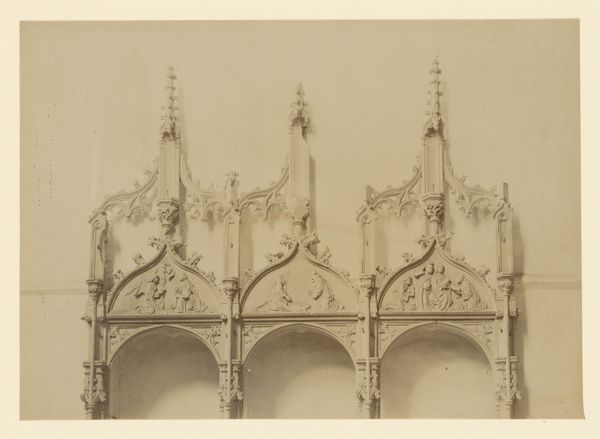
print, photography, architecture
# print
#
photography
#
ancient-mediterranean
#
academic-art
#
architecture
Dimensions: height 367 mm, width 297 mm
Copyright: Rijks Museum: Open Domain
Editor: This is "Detail van het doksaal in de kathedraal van Limoges," taken sometime between 1850 and 1900 by Adolphe Giraudon. It's a photograph, currently housed at the Rijksmuseum. The composition seems so meticulously crafted, with all those intricate carvings. What strikes you most about this piece? Curator: The play of light and shadow is paramount here. Observe how Giraudon meticulously captures the gradations on the sculpted stone. This meticulous rendering, combined with the academic style, invites an appreciation for form and texture above all else. How does the photographer’s framing affect your perception of the architecture itself? Editor: It definitely emphasizes the details. Without the wider context, I’m more focused on the individual elements and their relationship to each other rather than the function of the whole. Curator: Precisely. Note the recurring motifs – the wreaths, the pilasters, the arched niches. These elements contribute to a sense of balanced, hierarchical structure. Disregarding iconographic readings, how does the rhythmic repetition of these forms guide your eye? Editor: I see how it creates a sense of movement and draws your eye upward, even though the palette is limited. The formal elements almost create their own language. Curator: Indeed. Giraudon invites us to contemplate the intrinsic qualities of architectural form divorced from mere utilitarian purpose. Editor: That's a great point. It shifts the focus to the artfulness of the construction itself. I definitely see the composition differently now, recognizing those key aspects of form and texture. Curator: As do I. The visual organization is now more evident.
Comments
No comments
Be the first to comment and join the conversation on the ultimate creative platform.
